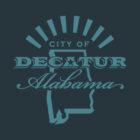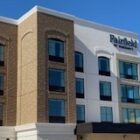Park has long history of providing jobs and enjoyment
From The Decatur Daily
by Bayne Hughes
Delano Park has a long history of providing recreation, enjoyment and jobs for the city of Decatur.
In 1887, a large park that would provide “recreation and respite for the people of Decatur in a rapidly industrializing world” was a focal point of the Decatur Land Improvement and Furnace Co.’s plan for a new town, New Decatur.
The town was renamed Albany before merging with Decatur in 1927.
Barbara Kelly and Melanie Dunn, former historic resources coordinator for the city of Decatur, detailed the 125-year history of the 28-acre park on Friends of Delano Park’s newsletters and website.
The park is an example of both the “City Beautiful” movement of the late 1800s and as a representation of New Deal park projects, Kelly said.
“I had no idea the park has such a great history,” said Kelly, who grew up less than two blocks from the park.
Landscape architect Nathan Franklin Barrett included the park in his town plan for New Decatur.
“The real eye-opener was seeing the map of New Decatur/Old Decatur (when New Decatur was laid out). It had Nathan Franklin’s name on it, and he was a very famous landscape engineer of the time,” she said.
The original boundaries still mark the park, which continues to thrive between Prospect and Grant streets in Southeast Decatur.
Kelly believes some of the park’s history remains buried on its grounds. She said Gen. John B. Hood and his Union troops may have camped on the site during the Civil War.
“The park is not far from one of his skirmishes,” Kelly said.
Major E.C. Gordon and Col. C.C. Harris were among the visionaries influential in the creation of New Decatur and Delano Park. Gordon was president and Harris was attorney for Decatur Land Improvement and Furnace Co.
Dunn said the park was kept mainly as green space for its initial 60-year history. Most of the surviving historic structures are from the Great Depression era when President Franklin Delano Roosevelt used park projects to provide much-needed jobs.
Dunn writes that major park improvements were made between 1933 and 1938 as part of the New Deal efforts under the Civil Works Administration and Works Progress Administration.
On Dec. 30, 1933, The Decatur Daily announced, “City park area to be a beauty spot on county’s face.”
The article says about 140 men were to be hired for the project through its Feb. 15 completion at a cost of $24,000.
“These projects provided needed job opportunities in bleak times and gave people new parks where they could experience beauty and fun once again,” Dunn writes.
Kelly said the Decaturs were lucky that the CWA “was tasked to help those in the greatest need.” The park in New Decatur and Old State Bank were included as CWA projects.
“It really only lasted a few months, but it helped so many people find work,” Kelly said.
The newspaper article says the section between Sixth and Eighth avenues would be a “central beautification theme” and eventually include an elevated rose garden, created in 1934, with 2,000 selected roses planted at vantage points. Other possible plantings included 3,000 gladiolas, crepe myrtles and trees transplanted from Bankhead National Forest.
“The color ensemble, when complete, is expected to be on rare beauty,” the article says.
In its Jan. 16, 1934, edition, The Daily announced that Mrs. A.A. Winton had won a naming contest with her suggestion that the park be named after Sara Ann Delano Roosevelt, mother of President Roosevelt.
“They chose Delano over Roosevelt because it would be different from other places that would use the more common name of Roosevelt,” the newspaper article says.
Carolyn Cortner Smith, Alabama’s first licensed female architect, guided the construction of many of the park’s stone structures.
Smith led teams of men in the CWA and WPA in building the park’s rose garden, bathhouse and wading pool, bandstand, dance pavilion (now the Girl Scout Little House) and National Guard Armory (now Fort Decatur Recreation Center). Smith also led the restoration of the Old State Bank.
Early known recreational uses of the park include a 9-hole golf course and tennis courts. New public facilities added during the 1930s included a playground, wading pool, bandstand and gazebo, dance pavilion and picnic shelters.
The recreational improvements “revealed that economic and social hard times did not cause an abandonment of imagination, humor or fun.”
The construction took seven years. In 1944, the park officially reopened and was dedicated with a formal July 4 ceremony in front of 350 people. The event featured games led by park staff and patriotic music.
“A new flagpole lent dignity and a deeper sense of patriotism and loyalty to the occasion,” The Daily writes.
Kelly said Delano Park remained as a central park for the city until the late 1960s.
In response to protests over the Vietnam War in 1967, two reporters came up with the Spirit of America celebration at Delano Park over a cup of coffee. Al Benn, from The Decatur Daily, and George Biggers, from The Birmingham News, founded the event that is now a tradition in the city.
The Daily reported that the pair developed the idea only weeks before the holiday — leaving little time to plan the event. Grilled hamburgers and hotdogs served alongside patriotic performances kept festival-goers entertained at the park.
A local theatrical group performed a rendition of George M. Cohan’s “Yankee Doodle Dandy,” and locals gave patriotic speeches. The festival would later move to Point Mallard Park, where it celebrated its 50th anniversary last summer.
Kelly said shrinking budgets of the 1970s and 1980s created a period of decline and deferred maintenance for many of the nation’s parks. The decline of Delano Park had become stark by the 1990s.”
In 2000, Friends of Delano Park was formed and an effort began to restore the Rose Garden and many of the park’s stone structures.
Kelly said the group has a long-range plan, but much of the Friend group’s funding is focused on maintaining the Rose Garden and many of the park’s structures.
“We would like to restore Girl Scout house and the exterior look of Fort Decatur,” Kelly said. “There are plans to build an open amphitheater that’s not as formal as the Daikin Amphitheater (at the Old State Bank).”






Sorry, the comment form is closed at this time.